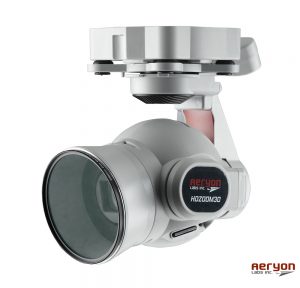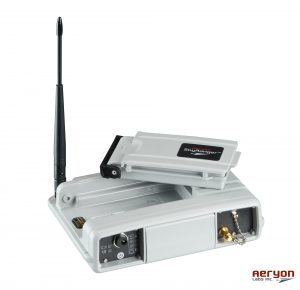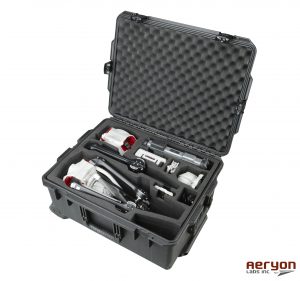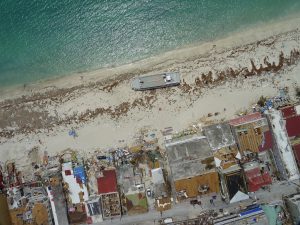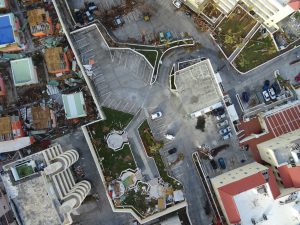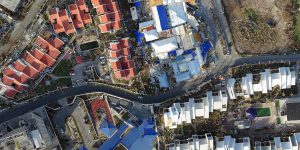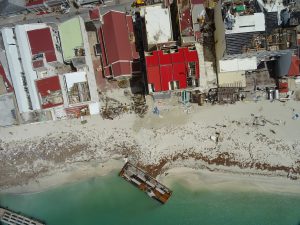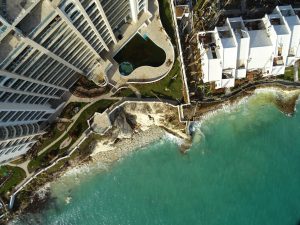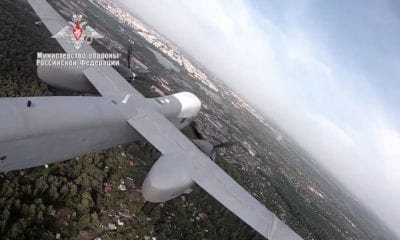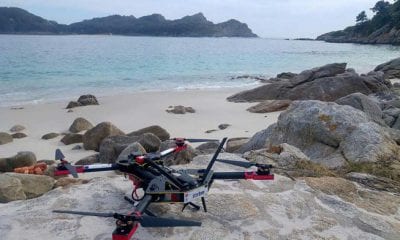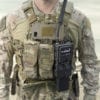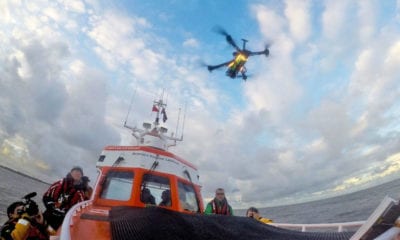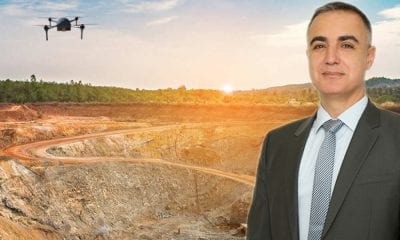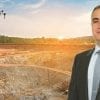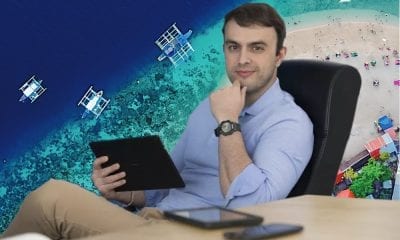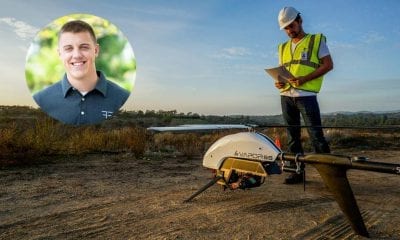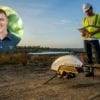
Back to Base (B2B)
An Interview with Dave Kroetsch, CTO & Co-Founder, Aeryon Labs
Can you tell us about the history of Aeryon and the Aeryon Scout?
Aeryon was founded in 2007 with a vision of making robust, easy to use drones. At the time, remote controlled drones were difficult to operate, requiring significant piloting skills and technical expertise. We saw an opportunity to develop smart drones which handled many of the complexities of flying and allowed the operator to focus on getting a job done. For Aeryon, it’s always been about simplifying the mission at hand. Drones should enable operators to make better decisions and help solve problems more quickly, safely, and cost effectively. Aeryon’s mission is making this vision a reality.
In 2009, after significant R&D, we launched the Scout. The Scout featured the first touch screen map-based controller on the market. It was easily packable, assembled in minutes in the field with no tools, and had interchangeable payloads. It operated on an encrypted digital network and in the harshest of weather conditions. The Scout was a breakthrough in the drone marketplace.
Where does the SkyRanger sit in the current UAV market?
We launched the SkyRanger in 2013 and it sits at the high-end of the professional drone market and is focused on military, public safety, and commercial applications. The SkyRanger is the most robust and capable aircraft in its class, and brings many of the capabilities operators are used to from larger Group 2 drones, but in a Group 1 package. With over 100,000 hours on the fleet, SkyRanger is deployed with over 20 militaries around the world, and in daily use with public safety and commercial operators in over 30 countries.
- Aeryon SkyRanger
Can you describe how your payload and controller product range meets the objectives of the industries you support?
Aeryon’s customers are looking for advanced aircraft that can operate reliably in the most challenging applications and environments. All of Aeryon’s payloads are IP-rated for use in rainy conditions and can operate from -22F to 122F. Depending on the mission, Aeryon makes different cameras. Our two most popular payloads include:
- The HDZoom 30: a 30x optical zoom, 20 Megapixel camera – capable of allowing an operator to recognize a face or read a license plate from over 1,000 feet away.
- The EO/IR Mk II: a thermal and optical camera pairing perfect for search and rescue and fire operations where high-quality thermal imagery is critical.
Each of these cameras feature Aeryon’s Vector™ computer vision processing engine, allowing automatic moving target tracking, which can keep the camera trained on a target, even high winds and at a distance of several kilometres.
Recently you deployed SkyRangers to Support the Hurricane Irma Response, can you tell specifically how your systems assisted in the recovery efforts?
SkyRanger was deployed in response to both Hurricane Harvey (in Texas) and after Irma (in St. Maarten and Dominica). The primary application involved rapidly assessing damage of the islands. In less than two weeks a joint Aeryon and GlobalMedic team mapped 3300 hA at 3-4 cm/pixel resolution across St. Maarten and Dominica. With a resolution of 3 cm/pixel, the SkyRanger images could supplement and even replace existing maps that had a resolution of only 10, 20, or even 50 cm/pixel. With these detailed maps, agencies could create comprehensive damage assessments and prioritize demolition and reconstruction projects, and better plan recovery for critical infrastructure such as power and water lines.
With our AeryonLive software suite, operators were able to stream video, telemetry and images from the drone in real-time to central command as well as remote teams that were aiding in the disaster response planning.
What challenges were faced and how did you overcome them?
Naturally, hurricanes are accompanied by bad weather! Wind and rain are a challenge for many drones, but a normal part of operating in the real world. The SkyRanger has been designed with this in mind, and the weather conditions were no obstacle. Even with heavy rain, and winds averaging 40km/hour — and gusts up to 117km/hour, the SkyRanger delivered clear images and video of the area, allowing the team to continue working in all conditions.
Obtaining cellular coverage post-disaster is another major obstacle. With some cell towers down, the bonded cellular back-haul that is part of our system helped us navigate this challenge. Using up to 6 different cellular radios, talking to up to 6 different towers simultaneously, we were able put the available bandwidth together to get our video stream to the command center.
Can you share a success story from Aeryon’s involvement in the Irma response?
Ultimately, we provided a huge number of maps to the response teams to aid their efforts. To share just a few stats from the two-week mission:
- Total Area Mapped: 3300 hA
- Average of 3.258cm accuracy per image pixel
- 85 hours of flight time over 44 flights
- Distance of 215km flown
Overall, we were able to map nearly 20% of St. Maarten!

An Aeryon SkyRanger flies over a devastated Point Blanche, St. Maarten in the aftermath of Hurricane Irma.

The SkyRanger captured detailed imagery of the island that was combined using Pix4D to create high-resolution maps to aid first responders.
Where do you envisage the greatest potential for growth in the industrial UAV market?
One of the biggest areas of growth will be at the upper end of the market. The last few years have seen the growth of consumer drones, and that market is becoming saturated. Military, police and commercial enterprises and just beginning their adoption cycle. These are the markets where Aeryon excels.
You recently announced Dieter Wennemer as you Chief Product Officer. Coming from Blackberry product development team, what does he bring to Aeryon’s table?
Drones and cell phones actually have a lot in common. If you exchange the screen on a mobile phone for some propellers, you’ve built a drone. There is about an 80-90% overlap in the technologies that are the foundation for drones. Additionally, as the high-end drone market ramps up, the high-volume design and manufacturing skillsets employed in the cell phone market are key to building a scalable drone company. So, Dietmar’s skillset is in many ways aligned with what Aeryon needs next.
Overall how do you see drone technology expanding or changing in the next 5 years?
Drones are moving more and more towards automation. This has always been part of Aeryon’s vision, and was the reason we automated so many elements of the aircraft operations right from the beginning. We started with the tablet based control, and now have automatic computer vision tracking features. These elements of AI and autonomy will only grow and drive the next wave of innovation in drones.
What other companies in your space excite or inspire you?
I think the most exciting innovations and inspirations in any market come by transplanting ideas from other segments. For example, I’m confident that some of the AI algorithms from financial services, airline scheduling and computer vision will find their way into drones. Companies like Boston Dynamics are doing incredible things in terms of robot control and path planning. Those types of algorithms will evolve from ground applications into the air.
Where and what will you be exhibiting next?
We exhibit all over the world and in different segments, from commercial trade shows to military expositions. Check our website for the latest list of shows!
What will 2018 bring for Aeryon?
2018 will bring growth for Aeryon. We’ll see more new product launches as well as an expansion of the company. This year Aeryon add offices in the US and employees in both Asia and Europe. We’ll see several of these locations continue to grow, as we move to work with our customers even more closely.
About Dave Kroetsch, CTO & Co-Founder, Aeryon Labs

Before becoming a founder at Aeryon Labs, Dave Kroetsch @davekroetsch held a number of engineering positions at several companies, including PixStream, Cisco Systems, VideoLocus, and LSI Logic, where he developed hardware to deliver digital video systems. Dave earned his BASc and MASc in Engineering from the University of Waterloo and began his career in Aerial Robotics in 1997 when he founded the Waterloo Aerial Robotics Group, an organization that he managed for six years. Dave has been a member of the Board of Directors at Aeryon Labs since 2007.


